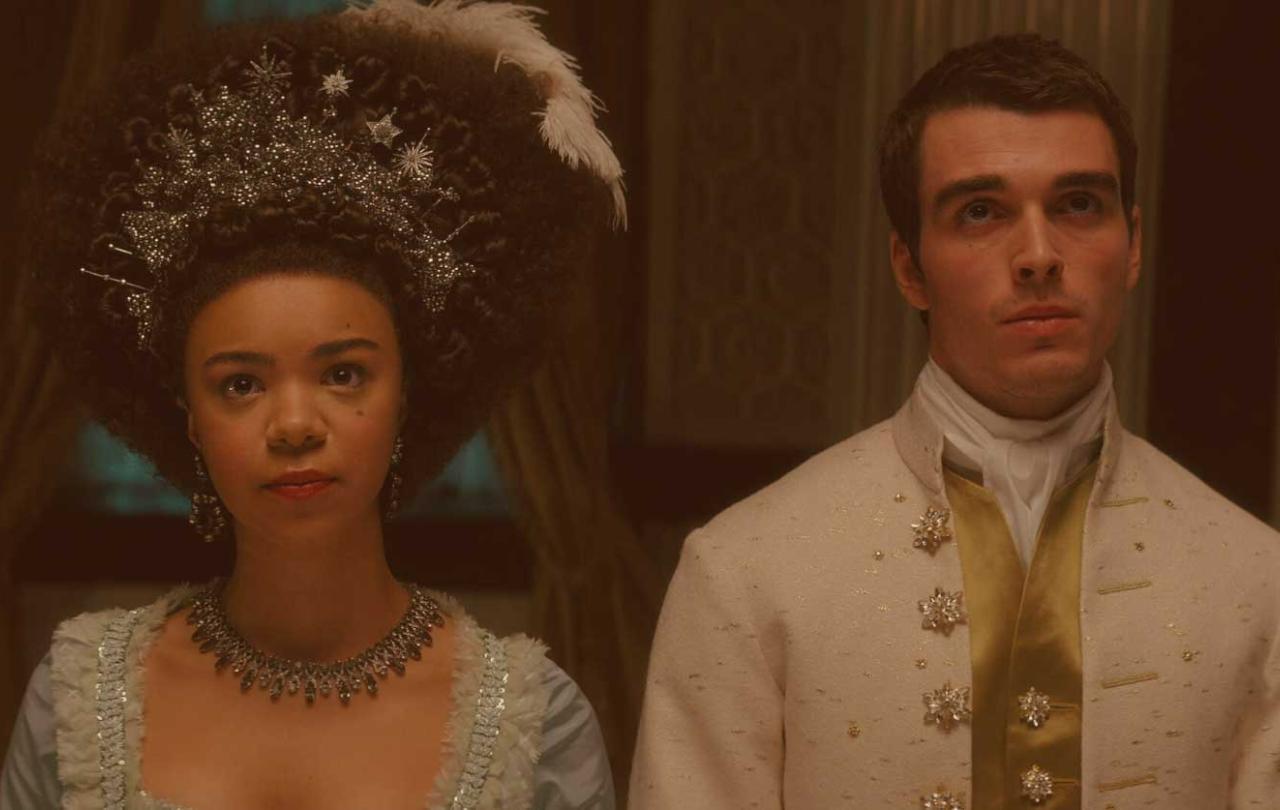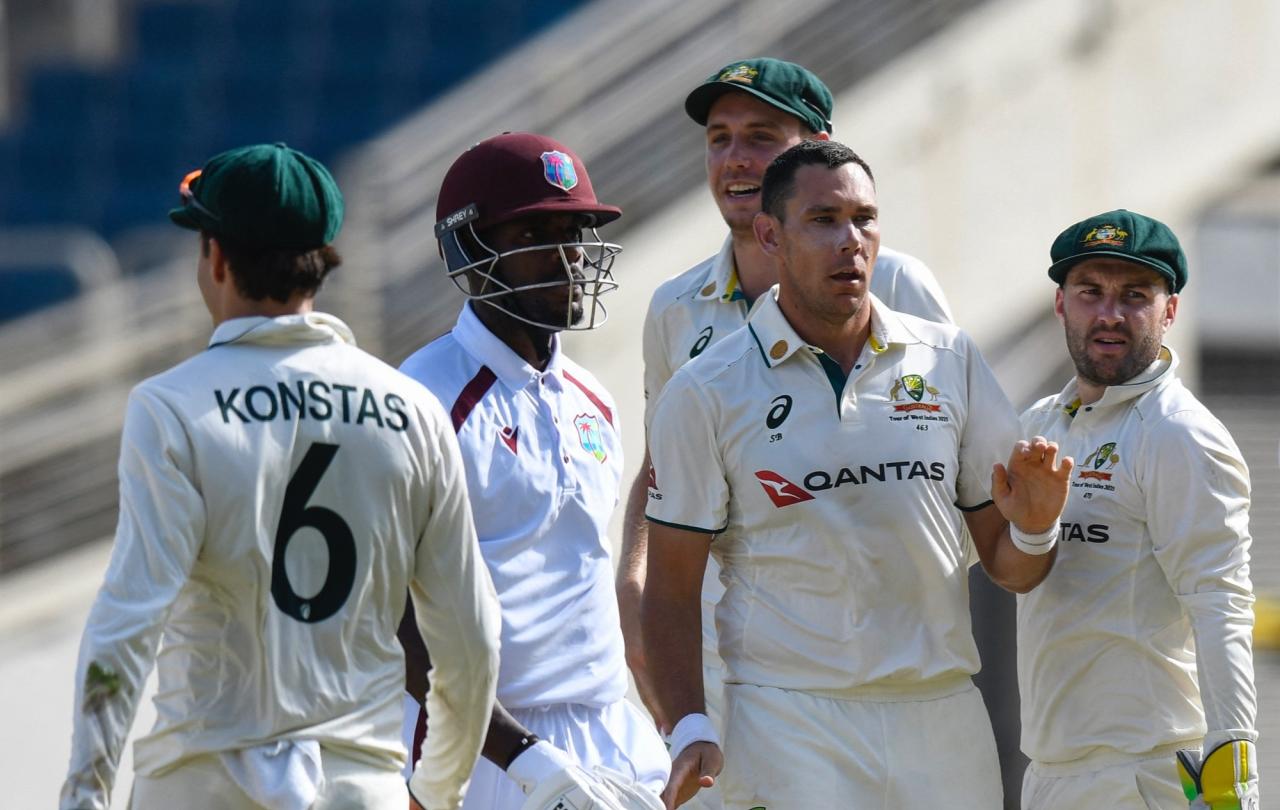
Regency romance is very definitely back, if indeed it ever went away. Fans of Bridgerton will be aware how very binge-worthy the Jane Austen-meets-Gossip-Girl world brought to the screen by Shonda Rhimes is. But her new spin-off prequal has outdone itself. Since it landed on Netflix on May 4th, 307 million hours of Queen Charlotte have been watched – especially impressive given it only has six episodes – and now it looks set to become one of Netflix’s most popular series of all time. All the fun and frivolity of the Bridgerton world is here – sumptuous costumes, compelling drama about strong women, electric chemistry between the two leads, supported by a strong and diverse ensemble cast, shown in stunning period locations as they dance at elaborate balls… and all set to a soundtrack of modern pop songs reimagined as orchestral anthems.
Gentle reader, prequals can be something of a curate’s egg – they can provide the joy of returning to a much loved, familiar world to learn more about favourite characters. But there might be the devastating discovery that the world you love has become disappointingly plodding, or worse, been leveraged for profit – would this prequel be a Better Call Saul or more of a Cruel Intentions 2?
Thankfully, Queen Charlotte: A Bridgerton Story is that rare thing – a backstory that betters the original, with more emotional heft as it shows us how several much-loved characters developed. We see the context for how the Bridgerton world came into being - controversially described previously as colourblind, in this new show race is part of the story as ‘the great experiment’ unfolds; Queen Charlotte is a love story that supposedly leads to a societal shift.
This is a very modern love story, with a difference. It remains frothy and funny, but there is a serious focus and insight too.
While the two leads may be familiar from history lessons, the show opens with the dulcet tones of doyenne Julie Andrews reminding us, in her role as Lady Whistledown, that Queen Charlotte:
“is not a history lesson. It is fiction inspired by fact. All liberties taken by the author are quite intentional.”
We all already know how this story ends – and yet as we spend time with such compelling characters the suspense builds all the same. This is a very modern love story, with a difference. It remains frothy and funny, but there is a serious focus and insight too. This is still a swoon-worthy romance, but here women grow in their power as they understand themselves, and each other, better. Whether or not you have someone to sweep you off your feet (or help you over the garden wall!) that understanding is something we can all aspire to.
Meanwhile, many of the men in the Bridgerton world have their own challenges to work through (from abusive fathers to more loving ones who die in front of them), and this show is no exception. Juxtaposed with the lightness, banter, and of course the love scenes, there is a heaviness and darkness here too.
We see George struggling with his mental ill-health such that though he has fallen head over heels for Charlotte from the moment of their meet-cute, he feels he must hide himself away from her to avoid hurting her, and then undergoes a shocking, traumatic series of ‘treatments’. Having seen their relationship from her perspective, we have our eyes opened from episode 4 as his attempts to hide his illness are revealed, first to the viewer and then to his beloved. His devastating illness is shown compassionately, but despite the empathy, it is still hard to watch. This is storytelling so strong that it has left many with a passion for a character they previously thought of as the ‘mad king’ from Hamilton who tried to prevent American independence!
This level of narrative ability is perhaps why the legend that is Julie Andrews called Shonda Rhimes ‘one of the most powerful creative forces in film and television today’. We live a world where we see many romances on screen just as they are getting started – we see from the meet-cute to the declaration of love or the ‘I do’, ending as we reach a happy ever after. Yet Shonda Rhimes has been clear that she is not interested in telling the ‘sort of romantic story of a marriage where everything's perfect’. Each of us knows we are not perfect, and we know that nor (even in the first flush of romance!) are those we love. The Book of James in the Bible reminds us that ‘we all stumble in many ways’. But we choose to love anyway. In this show, love is not just about a belief in destiny, being deserving, or mere attraction. Lecturing her son, Charlotte reminds him:
“Love is not a thing one is able or not able to do based on some magic, some chemistry. That is for plays. Love is determination. Love is a choice one makes.”
From arranged marriage to meet-cute, from working through an unconsummated marriage to having 15 children and devastating long-term mental ill-health, we see a love that remains constant despite the challenges; Charlotte shouts at George ‘I want to fight with you. Fight with me. Fight for me’ when she thinks him indifferent.
he actress who plays young Charlotte, India Amarteifio, beautifully noted that ‘unconditional love is the river that runs through their relationship’. Even as George descends deeper in his madness, Charlotte meets him where he is at (frequently literally as well as figuratively!) to be with him. As fan-favourite Lady Danberry observes:
“what matters madness when true love flourishes? For them, the weeds are all part of the process”.
This is a love that acknowledges the challenges, the imperfection, the pain and the sacrifice, but it persists. How do any of us find the strength to love like that? We may not all be King George, but we are all imperfect, and flawed – we all make mistakes and must ask for the forgiveness of those we love. For those with a faith, there is the hope of God with us to help us; the Bible says ‘we love because he first loved us’. The Dutch priest and psychologist Henry Nouwen powerfully wrote:
‘our life is full of brokenness – broken relationships, broken promises, broken expectations. How can we live with that brokenness without becoming bitter and resentful except by returning again and again to God’s faithful presence in our lives’.
In a world filled with perfect-looking screen romances, the bittersweet depth of Queen Charlotte touched me far more than any aspirational happy ending. This was far more interesting, more powerful, and more complex. Part of romantic love is attraction and feelings, but also choice and action; hearts and flowers if that’s your thing, but also being a team, wanting what is best for them above yourself, supporting one another to be your best. To quote the passage from the book of Corinthians and so often quoted at weddings, this ‘Love bears all things, believes all things, hopes all things, endures all things’. In a world filled with perfect-looking screen romances, this depiction of love as a daily choice, made with courage and compassion, is what I long to see more of. But I’ll happily take it with a side of regency glamour – it wouldn’t be Bridgerton without it!





